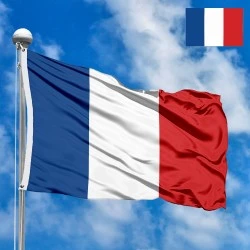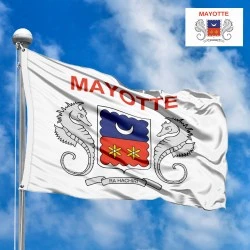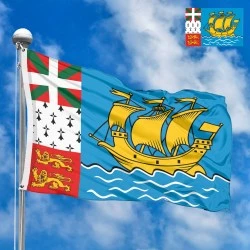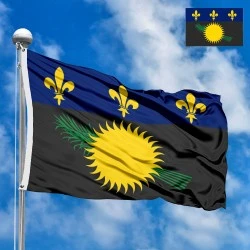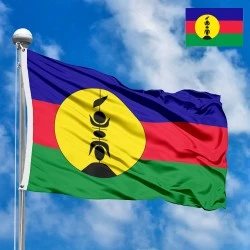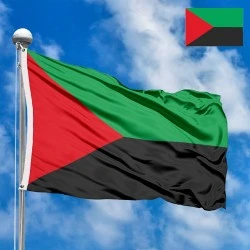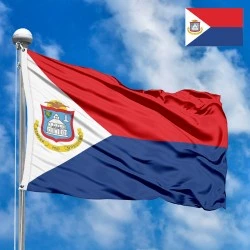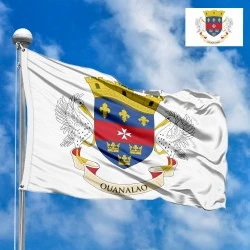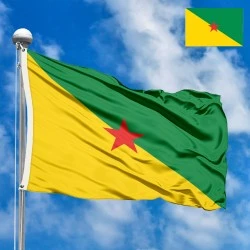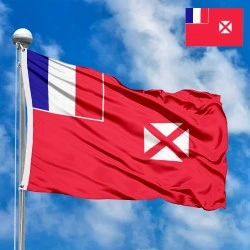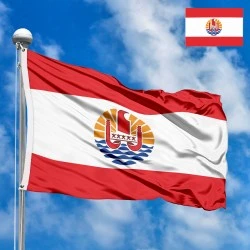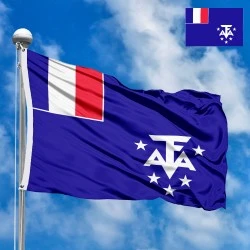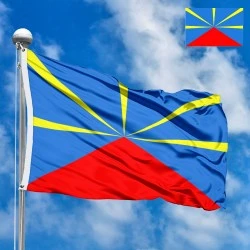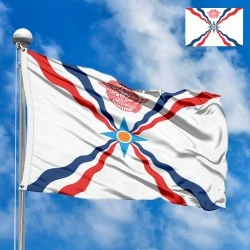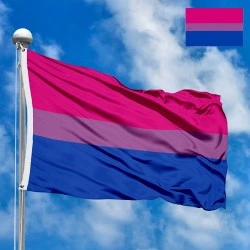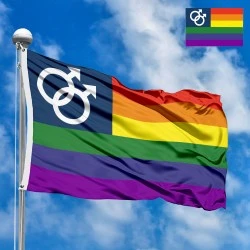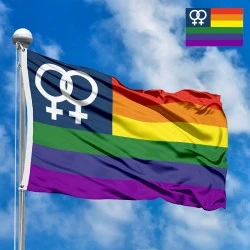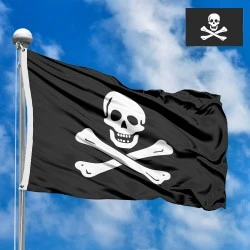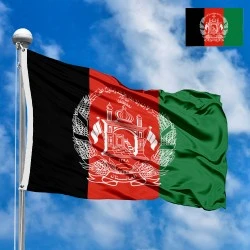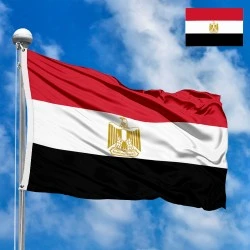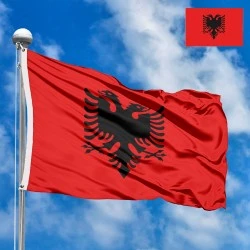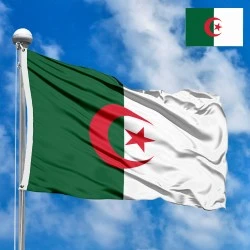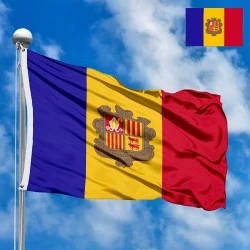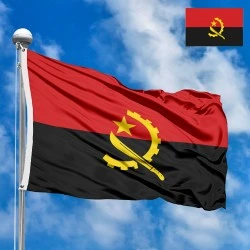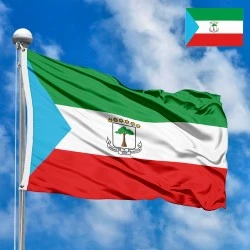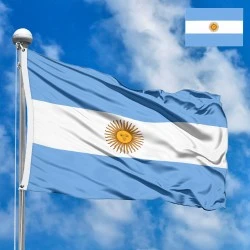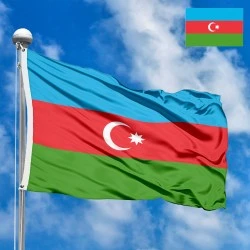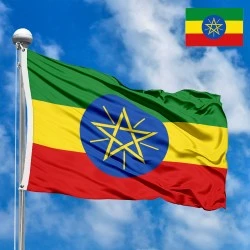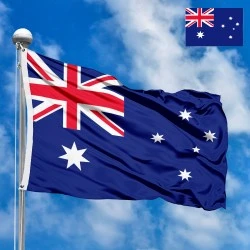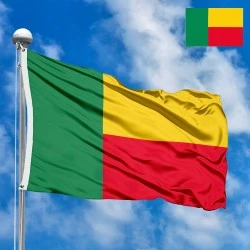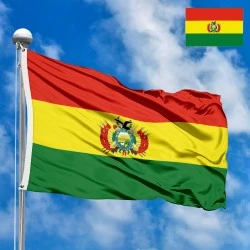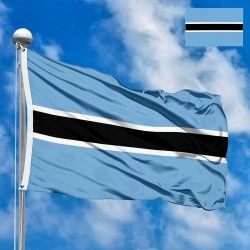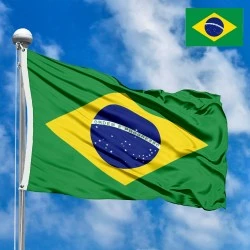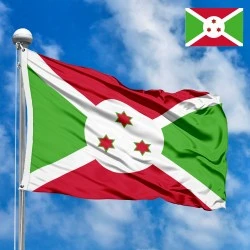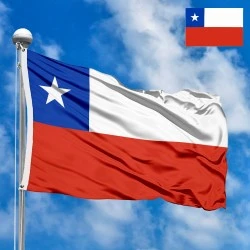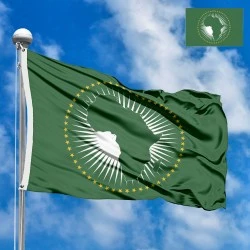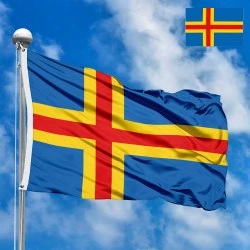Flag of New Caledonia
- Flag Type: Regional
- Proportions (official): 1:2
- Official name: New Caledonia
- Local name: Nouvelle-Calédonie, Kanaky
- Sovereignty (year): NO (Special collectivity of France)
- Member of Organizations: Pacific Community
- Country code, territory: NC, NCL, 540
- Capital: Nouméa
- Large cities: Dumbéa, Mont-Dore
- Population: 295,000 (2024, estimate)
- Religions: Christianity ~50%
- Area (km²): 18 575
- Highest point: Mount Panié (1,629 m)
- Lowest point: Pacific Ocean (0 m)
- Currency: CFP franc (XPF, F)
- Languages: French, local Kanak languages
- Dialing code: +687
- National domain: .nc
Flag Information
General information
Demography and Culture
Economy and communications
- All Flags
- Flags of Countries by Continent
-
Flags of Organizations
- Flags of UN countries
- Flags of the European Union countries
- Flags of NATO countries
- Flags of the countries of the Organization of Islamic Cooperation
- Flags of the countries of the Organization of American States
- Flags of the Arab League countries
- Flags of the African Union countries
- Flags of the countries of the Union of South American Nations
- Flags of the Commonwealth of Nations
- Flags of the countries of the Secretariat of the Pacific Community
- Flags of the Nordic Council countries
- Flags of the Caribbean Community
- Flags of the countries of the Association of Southeast Asian Nations
- Flags of the East African Community
- Flags of the countries of the Organization of Turkic States
- LGBT Community Flags
- Historical Flags
- Ethnic Flags
- Flags of the USA (states)
Description
The flag of New Caledonia is more than just a piece of fabric; it's a vibrant tapestry of history, culture, and political aspiration. Though it flies alongside the official French Tricolour, this distinct flag is a powerful emblem of the indigenous Kanak people and their ongoing journey toward autonomy and self-determination. For a website dedicated to vexillology and history, understanding this flag means delving into a complex narrative of colonialism, resistance, and the quest for cultural recognition.
Anatomy of the Flag: Design and Dimensions
The flag is composed of three horizontal stripes and a central emblem. The stripes feature a striking tricolor pattern:
-
The top stripe is blue, symbolizing both the vast Pacific Ocean that surrounds the archipelago and the sky above. This color represents the deep connection the Kanak people have to their maritime and celestial environments.
-
The middle stripe is red, a color with multiple layers of meaning. It represents the blood spilled by the Kanak people in their fight for independence, particularly during the rebellions of the 19th and 20th centuries. It also signifies the socialist ideals of the political movement and the unity of all the people of New Caledonia.
-
The bottom stripe is green, representing the rich, fertile land of the islands. This color is a nod to the lush tropical forests, the agricultural bounty, and the land itself, which is a source of life and an integral part of Kanak identity and spiritual belief.
Superimposed on the center of the stripes is the most distinctive element: a black flèche faîtière (rooftop spear). This traditional carved totem, representing ancestral spirits, is a central motif in Kanak architecture, placed atop the Great Houses. The flèche faîtière is set within a yellow or orange disc, which symbolizes the sun—a source of life, energy, and sovereignty. The traditional dimensions of the flag are typically a 2:3 ratio.
History of Creation and Adoption
The flag's story is intertwined with the political history of New Caledonia. It was created in 1980 by the Kanak and Socialist National Liberation Front (FLNKS), a key political party advocating for the archipelago's independence from France. The FLNKS, under the leadership of Jean-Marie Tjibaou, sought a powerful and recognizable symbol to represent the Kanak people's cultural identity and political aspirations.
For decades, this flag served as the unofficial emblem of the independence movement, a rallying point for those who sought an end to French rule. However, its status changed significantly in 2010. Following years of political negotiation and the implementation of the Nouméa Accord (1998)—which outlined a path to greater autonomy and eventual independence referendums—the flag was officially recognized as a co-official emblem alongside the French Tricolour. This was a monumental moment, acknowledging the dual identity of the territory and providing a powerful gesture of reconciliation and respect for Kanak culture.
The Role of the Flag in the Region
New Caledonia is officially a "sui generis" collectivity of France, a unique political status that grants it more autonomy than a typical overseas territory. The dual-flag arrangement is a physical manifestation of this complex political identity. Flying both flags—one representing the French Republic and the other representing the Kanak people and their territory—is a common sight at government buildings, public events, and even in many private homes.
The flag holds immense cultural and emotional significance for the Kanak people. It is a symbol of resilience, cultural pride, and a hopeful vision for the future. Its adoption as a co-official flag has allowed it to become a unifying symbol for many residents of the islands, regardless of their ethnic background, who identify with the unique culture and aspirations of New Caledonia.
Fun Facts and Regional Significance
-
The World’s Largest Lagoon: New Caledonia is home to the largest enclosed lagoon in the world, a UNESCO World Heritage site known for its extraordinary biodiversity.
-
A Diverse Population: The archipelago's population is a rich mix of Kanak, European (primarily French), Wallisian, and other ethnicities, all of whom contribute to the unique multicultural fabric of the islands.
-
The Nouméa Accord: The 1998 agreement established the process for referendums on independence, with three votes having taken place. The most recent referendum in 2021 resulted in a vote to remain part of France.
-
The Flèche Faîtière: This specific design on the flag is a stylized version of a real carved totem. The number of arrows on a flèche faîtière can signify the number of clans within a family, and shells can be added to represent ancestral spirits.
In the demonstration images, full-size flags are shown with proportions of 2:3, and hand-held flags with proportions of 1:2.
Donation
Download
Completely free for commercial and non-commercial use (public domain).
You can freely use them in your news magazines, websites, software, mobile applications.
We appreciate a backlink to https://flagssite.com
Raster files - Flag of New Caledonia (PNG, JPG)
 Waving flag
Waving flag
- PNG format (transparent background), 72dpi, dimensions in Pixels (px), aspect ratio 3:4.
- 15х20 px
- 30х40 px
- 60х80 px
- 120x160 px
- 240x320 px
 Sizes:
Sizes:
"v15" - image size (by height); if necessary, replace with available: v15, v30, v60, v120, v240.
!!! For resizing, use the Latin (eng) keyboard layout.
<img src="https://flagssite.com/flags/v15/20718.png" alt="Flag of New Caledonia">
 Round flag
Round flag
- PNG format (transparent background), 72dpi, dimensions in Pixels (px), aspect ratio 1:1.
"d15" - image size (diameter); if necessary, replace with available: d15, d30, d60, d120, d240.
!!! For resizing, use the Latin (eng) keyboard layout.
<img src="https://flagssite.com/flags/d15/20718.png" alt="Flag of New Caledonia">
 Rectangular flag 2:3
Rectangular flag 2:3
- JPG format, 72dpi, dimensions in Pixels (px), aspect ratio 2:3.
"h30" - image size (by height); if necessary, replace with available: h15, h30, h60, h120, h240, h360, h480.
!!! For resizing, use the Latin (eng) keyboard layout.
<img src="https://flagssite.com/flags/h30/20718.jpg" alt="Flag of New Caledonia">

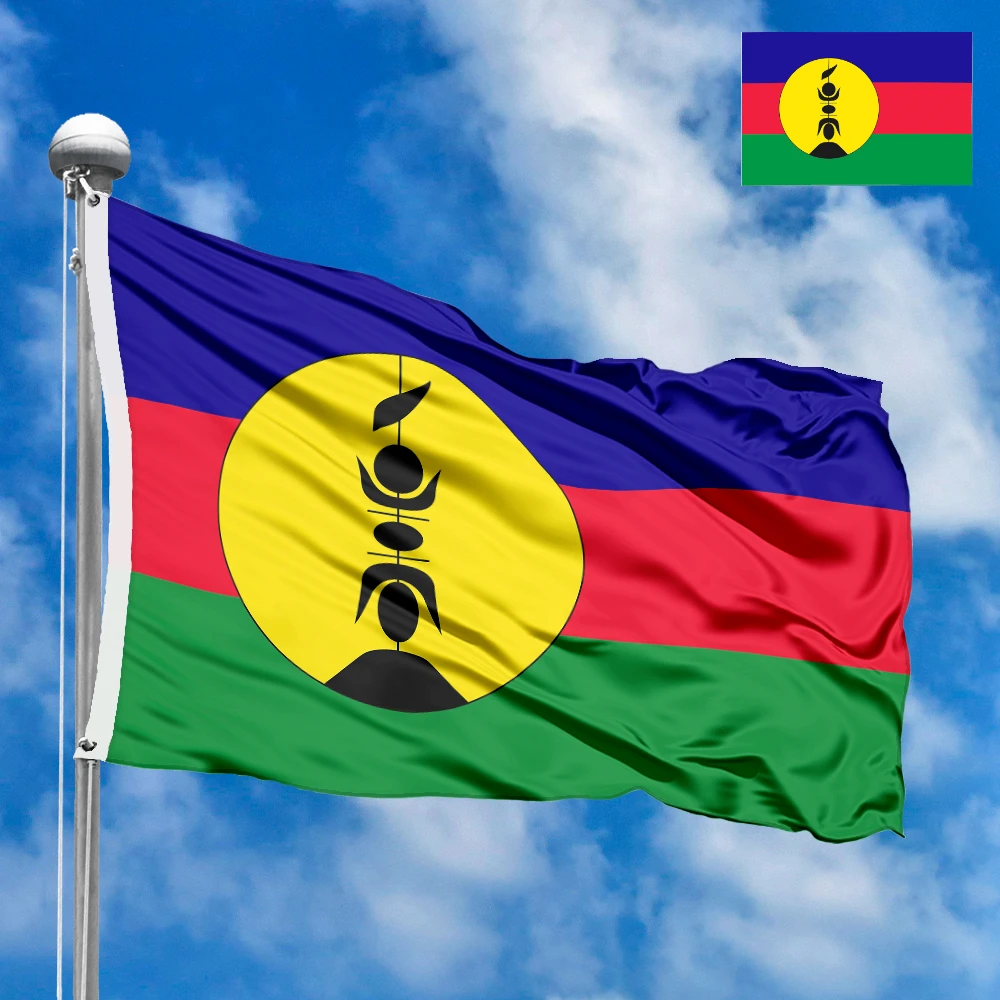
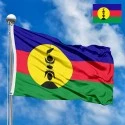
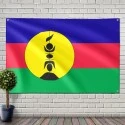
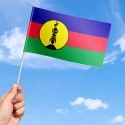

 Sizes:
Sizes:
 Sizes:
Sizes:
